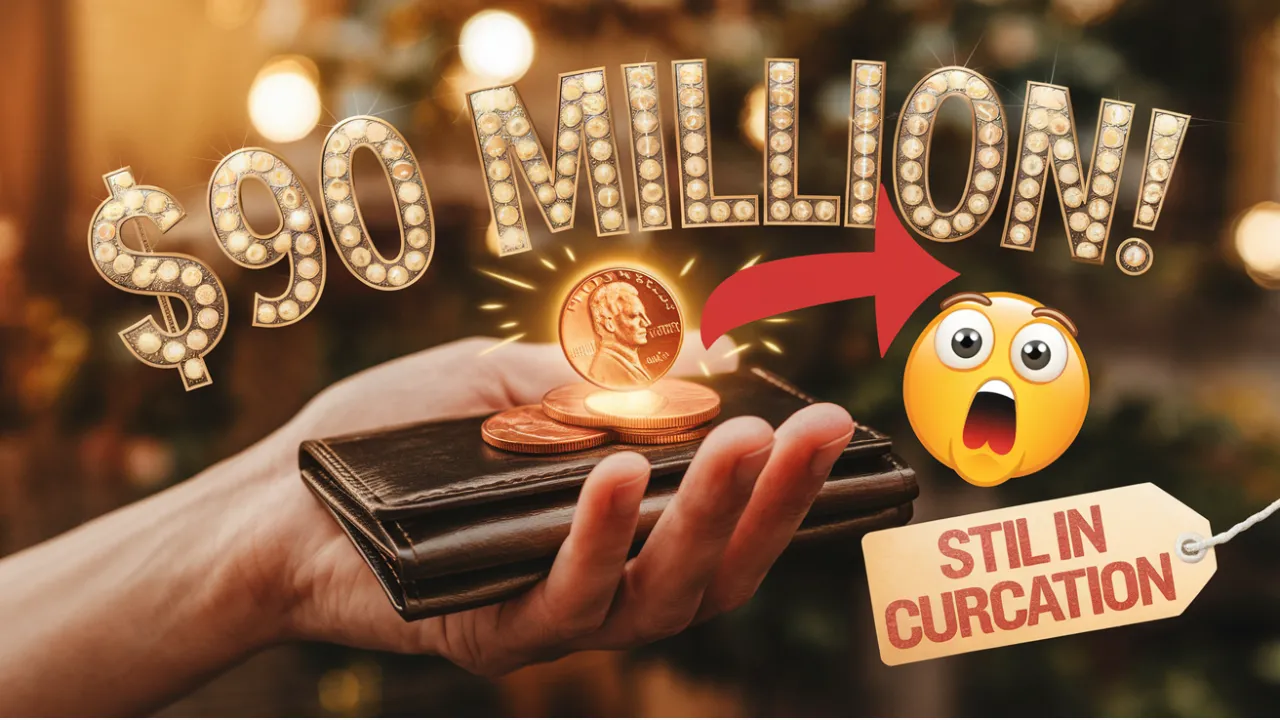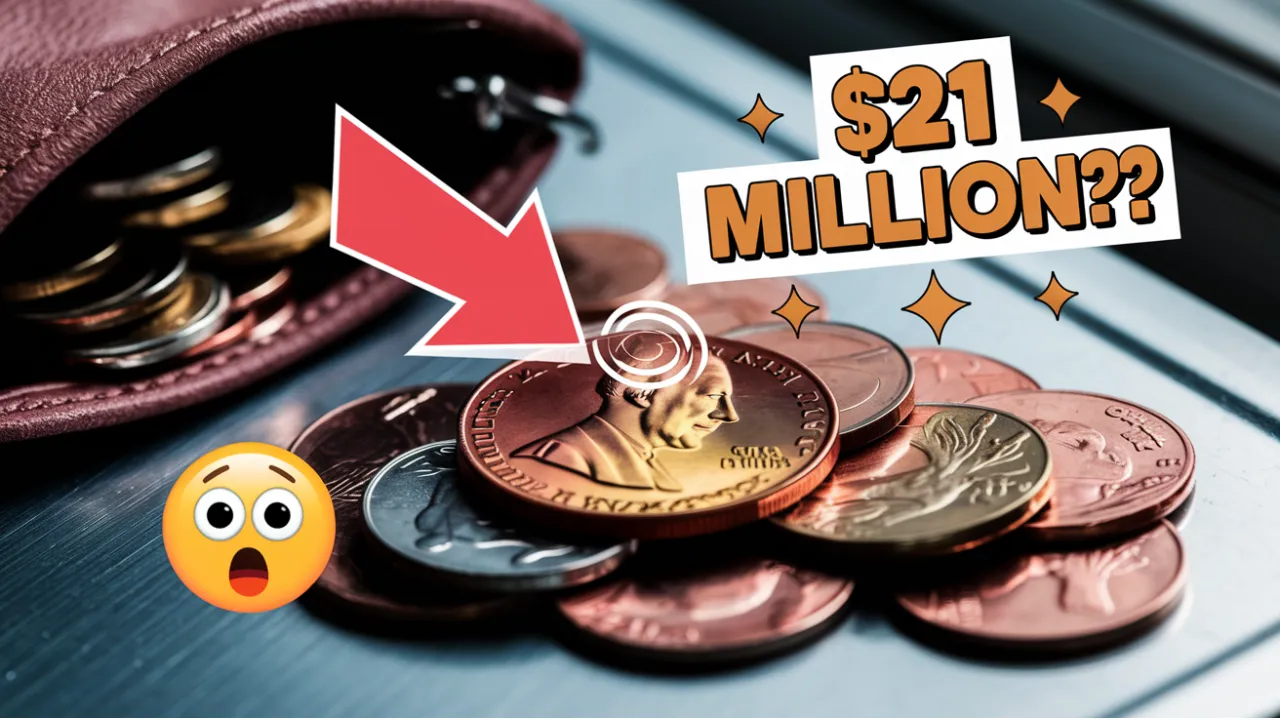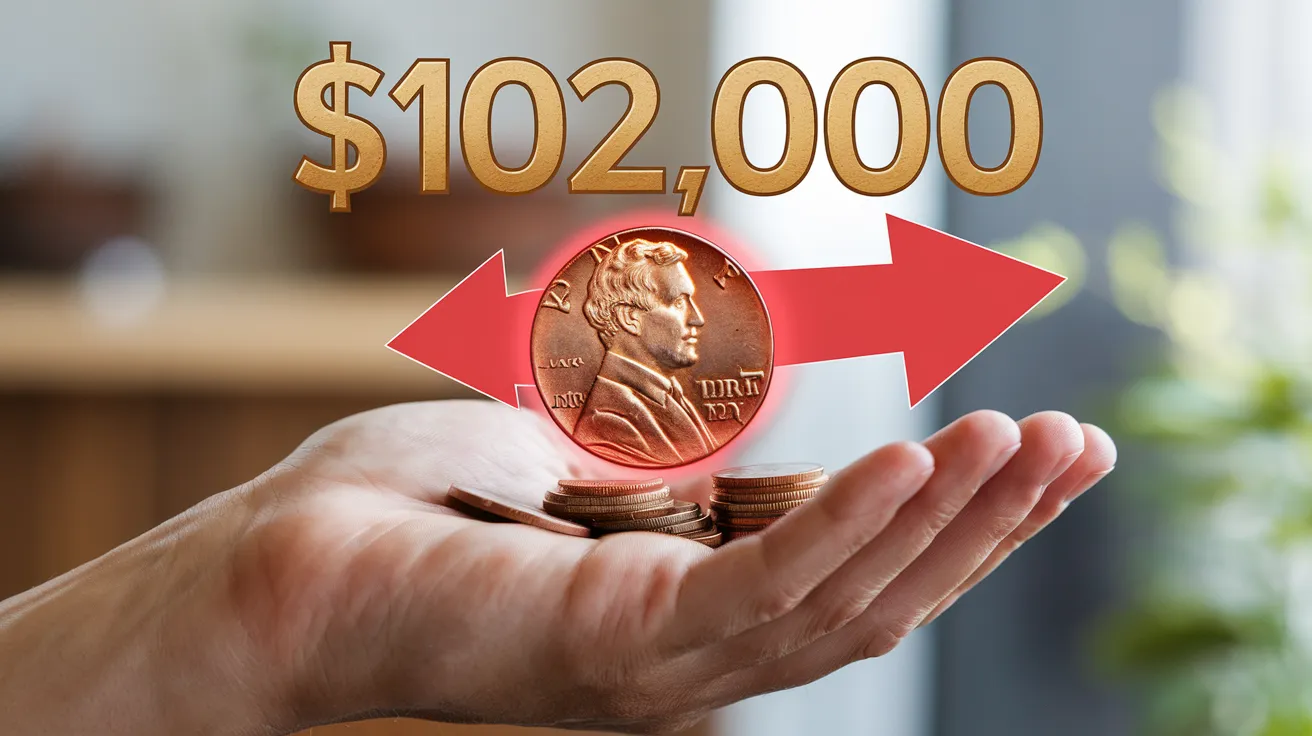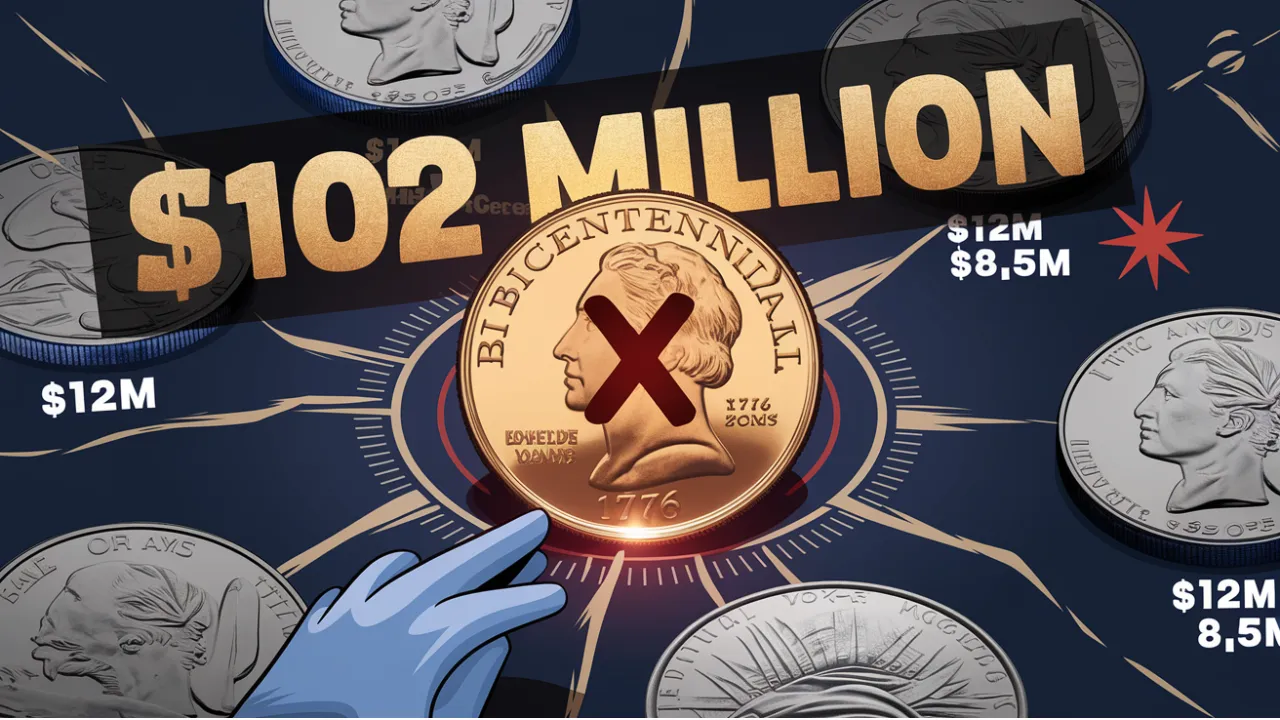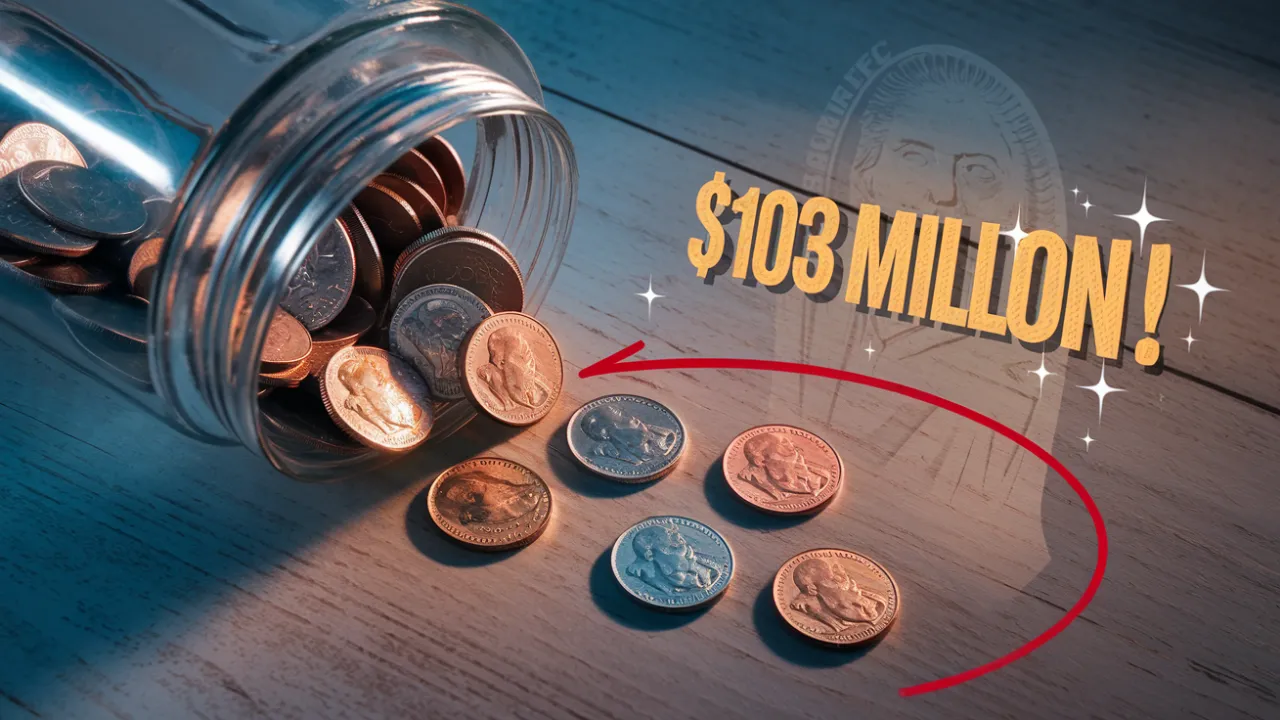The Lincoln Wheat Penny Valued at $90 Million: Imagine finding a penny in your pocket worth a life-changing $90 million. Sounds impossible, right? Yet, certain rare Lincoln Wheat Pennies have fetched staggering prices due to their historical significance, minting errors, and rarity. This small copper coin, first introduced in 1909, continues to capture the fascination of collectors worldwide.
But what makes a Lincoln Wheat Penny so valuable? Could one still be hiding in your spare change? In this article, we’ll explore the history of this legendary coin, what makes some of them worth millions, and how you can identify if you own one of these rare treasures.
Quick Overview of the Lincoln Wheat Penny
| Feature | Details |
| First Minted | 1909 |
| Designer | Victor D. Brenner |
| Produced Until | 1958 |
| Obverse (Front) | Abraham Lincoln’s profile |
| Reverse (Back) | Two wheat stalks |
| Rare & Valuable Years | 1909-S VDB, 1943 Copper, 1955 Double Die |
| Highest Estimated Value | $90 Million |
The Fascinating History of the Lincoln Wheat Penny
The Lincoln Wheat Penny was introduced in 1909 to commemorate the 100th birthday of President Abraham Lincoln. This marked a significant moment in U.S. coinage history, as it was the first American coin to feature a real historical figure instead of Lady Liberty.
Designed by Victor D. Brenner, the coin quickly became a favorite among collectors. It was minted from 1909 to 1958, with millions of copies entering circulation. However, certain variations and minting errors have made some Lincoln Wheat Pennies highly valuable, with one particular version rumored to be worth an astonishing $90 million.
What Makes the $90 Million Lincoln Wheat Penny So Valuable?
Most Lincoln Wheat Pennies are only worth a few cents, but a select few have become collector’s dreams due to several unique factors:
1. Rare Minting Errors
Some pennies were mistakenly struck using the wrong metal. For example, in 1943, most pennies were made from steel due to wartime copper shortages. However, a few copper pennies were accidentally produced, making them extremely rare.
2. Limited Production Runs
Certain years had very low mintage numbers, making those coins harder to find. For instance, the 1909-S VDB Lincoln Wheat Penny had a limited run and is now highly sought after.
3. Special Mint Marks
Coins with unique mint marks such as “S” (San Francisco Mint) or “D” (Denver Mint) often have increased value, especially if they were produced in small quantities.
4. Doubling or Design Errors
Some Lincoln Wheat Pennies show doubling effects on letters or numbers due to a minting mistake, significantly increasing their worth. The 1955 Double Die Lincoln Penny is one of the most famous examples of this error.
5. Uncirculated Condition
The condition of a coin plays a huge role in its value. A Lincoln Wheat Penny that remains in pristine, uncirculated condition can fetch higher prices at auctions.
The legendary $90 million Lincoln Wheat Penny is believed to be an extreme rarity—either due to a one-of-a-kind minting error, a special composition, or an unknown historical factor that makes it priceless to collectors.
How to Identify a Valuable Lincoln Wheat Penny
If you think you might own a rare Lincoln Wheat Penny, here are the key features to check:
- Year of Minting – Valuable pennies include 1909-S VDB, 1943 Copper, and 1955 Double Die.
- Metal Composition – Use a magnet! Steel pennies from 1943 will stick to a magnet, but a rare 1943 copper penny will not.
- Mint Marks – Look for the small “S” (San Francisco) or “D” (Denver) under the year on the front of the coin.
- Doubled Letters or Numbers – If letters appear duplicated or blurry, you might have a rare minting error.
- Condition of the Coin – Coins in mint or uncirculated condition are worth significantly more.
It’s always a good idea to have a coin expert or professional grading service inspect your Lincoln Wheat Penny for authenticity.
Could the $90 Million Lincoln Wheat Penny Still Be in Circulation?
Yes! Despite their rarity, some Lincoln Wheat Pennies are still in circulation today. Many people unknowingly spend them as regular pennies because they don’t recognize their value. This means there’s always a chance that one of these valuable coins could still be hiding in your pocket change, a piggy bank, or an old coin jar.
If you want to increase your chances of finding a rare Lincoln Wheat Penny, consider:
- Checking old jars or coin collections in your home.
- Looking through rolls of pennies from the bank.
- Visiting flea markets or estate sales where old coins might be overlooked.
You never know—you might be holding a $90 million penny without even realizing it!
Where to Sell a Rare Lincoln Wheat Penny
If you believe you’ve found a valuable Lincoln Wheat Penny, here’s how you can sell it for the best price:
- Visit a Coin Dealer – Professional numismatists can verify authenticity and provide an estimated value.
- Get It Certified – Send your coin to grading services like PCGS (Professional Coin Grading Service) or NGC (Numismatic Guaranty Corporation) for official certification.
- Sell at an Auction – High-end auctions attract serious collectors who are willing to pay top dollar for rare coins.
- Use Online Marketplaces – Platforms like eBay, Heritage Auctions, or GreatCollections are excellent for selling rare coins.
A rare Lincoln Wheat Penny could be your ticket to an unexpected fortune, so make sure you sell it through a trusted source to get the best possible price.
FAQs
1. What is the rarest Lincoln Wheat Penny?
The 1943 Copper Penny and 1909-S VDB Lincoln Wheat Penny are among the rarest and most valuable.
2. How can I tell if my Lincoln Wheat Penny is worth anything?
Check the year, mint mark, metal composition, and overall condition of your penny. You can also have it graded by a professional service.
3. Why are some Lincoln Wheat Pennies worth so much?
Rare minting errors, limited production runs, and unique metal compositions make some Lincoln Wheat Pennies extremely valuable.
4. Is it still possible to find a valuable Lincoln Wheat Penny in circulation?
Yes! Some rare Lincoln Wheat Pennies are still being used as regular pennies today.
5. What should I do if I find a rare Lincoln Wheat Penny?
Get it authenticated by a coin expert or grading service before selling it to ensure you receive the best price.
Final Thoughts
The Lincoln Wheat Penny is more than just a small piece of copper—it’s a symbol of American history and a collector’s dream. With some versions worth millions, it’s always a good idea to check your spare change. Who knows? You could be holding a $90 million penny without even realizing it!
Have you ever come across a rare Lincoln Wheat Penny? Let us know in the comments below! And if you’re interested in learning more about coin collecting, be sure to explore our other articles on rare and valuable coins.
